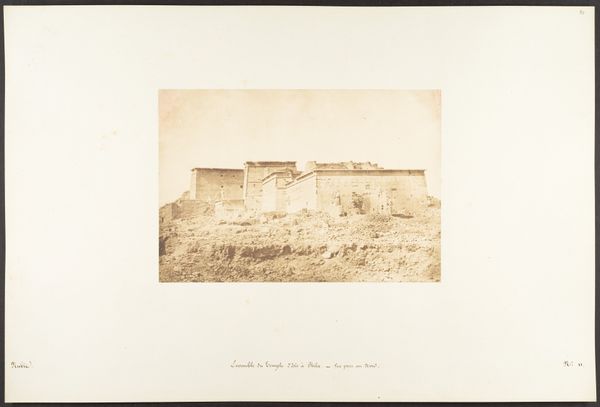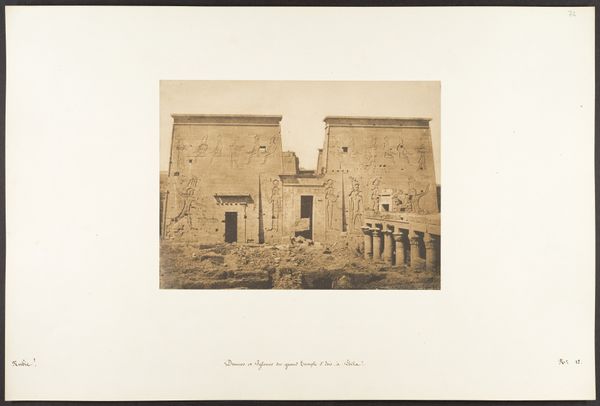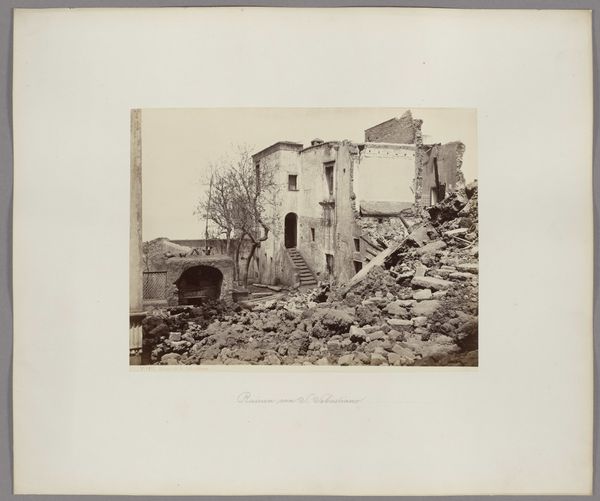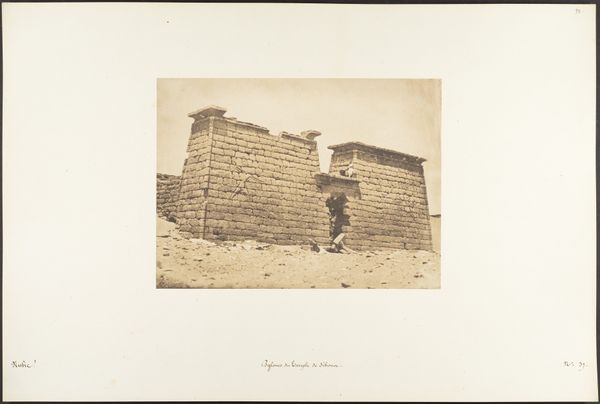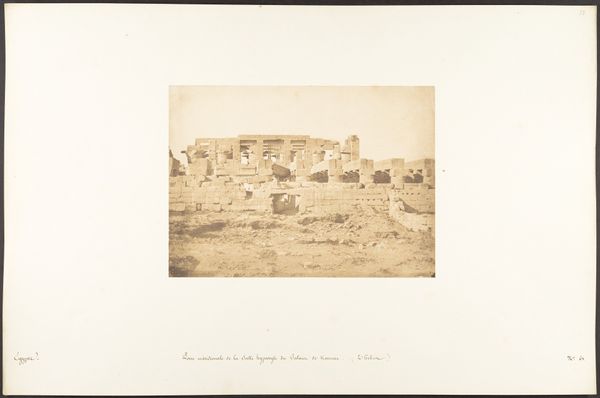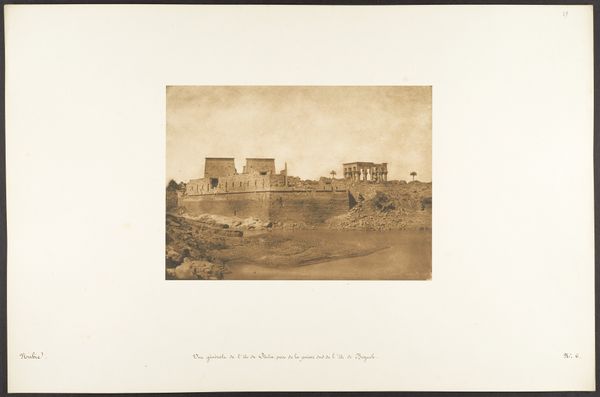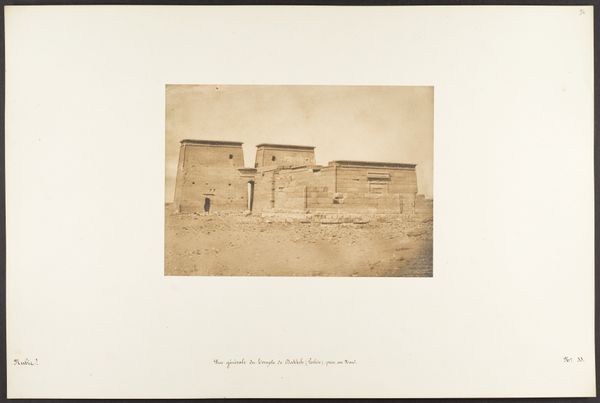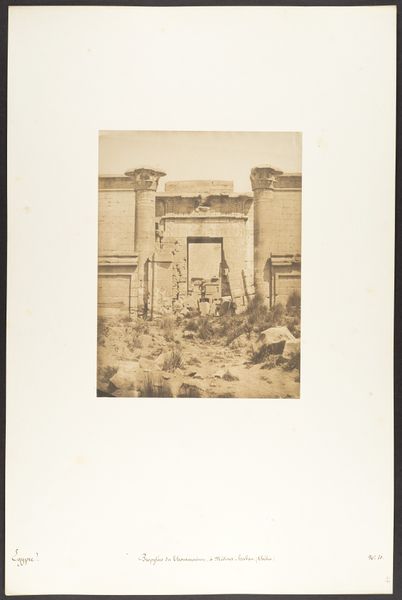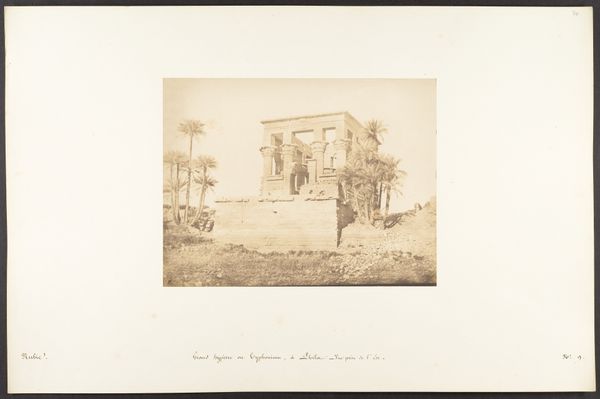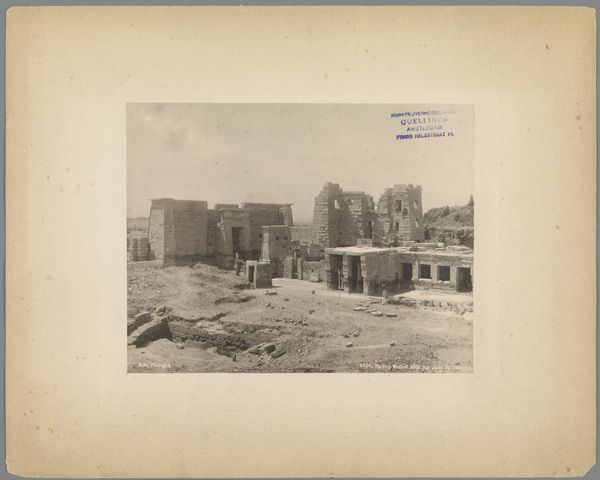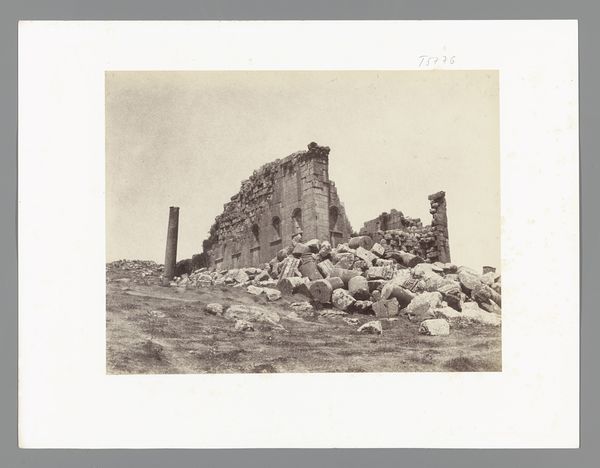
Vue du pronaos du Temple de Dandour (Tropique du Cancer) 1850
0:00
0:00
daguerreotype, photography, architecture
#
landscape
#
daguerreotype
#
ancient-egyptian-art
#
photography
#
ancient-mediterranean
#
architecture
Dimensions: Image: 6 9/16 × 8 1/2 in. (16.6 × 21.6 cm) Image: 8 7/8 × 6 9/16 in. (22.5 × 16.7 cm) Mount: 18 11/16 × 12 5/16 in. (47.5 × 31.2 cm)
Copyright: Public Domain
Editor: We’re looking at Maxime Du Camp’s 1850 daguerreotype, “Vue du pronaos du Temple de Dandour (Tropique du Cancer),” housed at the Metropolitan Museum of Art. There's such a stark contrast between the solid temple structure and the surrounding rubble. What catches your eye in this photograph? Curator: You know, it’s funny, this image makes me think about ruins and the stories they whisper. Imagine Du Camp, hauling his equipment all the way to Egypt in 1850 – talk about dedication! It's a pretty arresting, almost theatrical image. Editor: The theatrical part really resonates! It’s as if the temple is on a stage, amidst this chaos. Do you think Du Camp intended to convey that sense of drama? Curator: It’s possible, right? Though I reckon the daguerreotype, as an early form of photography, probably wasn’t all that flexible. The image itself feels heavy, doesn’t it? In my view, It reflects that kind of colonial gaze too - that sense of romanticising the fall of empires or something like that. What do you reckon, Editor? Editor: Absolutely, I agree. It's romantic but distant, in a way. The cool precision of photography clashes with the warm feeling of the ancient world and that contrast just fascinates me. It gives the piece such dynamism, almost like two pieces competing on one surface. I think it makes the photograph more rich as a result. Curator: Spot on. Seeing those very sharp lines of a very early photograph holding something so old, so eroded…It's quite a strange and exciting feeling.
Comments
No comments
Be the first to comment and join the conversation on the ultimate creative platform.
